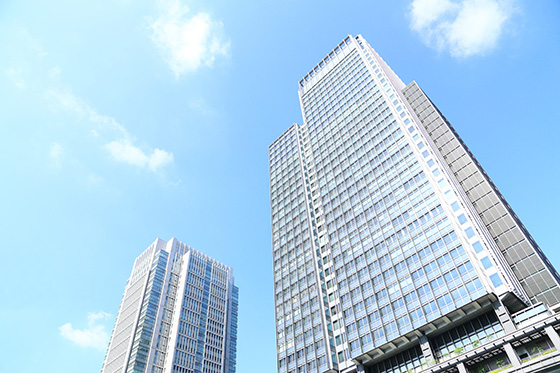Okinawa Laboratory offers a variety of different commissioned and joint studies for genetic analysis, analysis of health food ingredients, and research and development of cosmetics and functional ingredients in collaboration with partners. Please contact us if you have any requests including the following:
- I want more detailed information on functional ingredients.
- I want to try a demonstration test.
Commissioned Test
| Classification | Test/subject | Item | Description |
|---|---|---|---|
| Safety (cosmetic standard) | Component analyses | The least items need to be verified | Formaldehyde, arsenic, lead, cadmium, mercury, standard plate count, mold count, and methanol |
| Screening 1 | Formalin (formaldehyde), hazardous metal elements, antiseptic agents, UV absorbers, pigments (quantitative), and antioxidants | ||
| Screening 2 | Formalin (formaldehyde), hazardous metal elements, antiseptic agents, UV absorbers, and antioxidants | ||
| Screening 3 | Antiseptic agents, UV absorbers, and pigment | ||
| Safety | Human tests | Patch test | Evaluate primary irritation of cosmetics, etc. |
| RIPT (repetitive stimulation and sensitization test) | Verify allergies (sensitization) caused by repetitive stimulation | ||
| Stinging test | Evaluate itch and irritation | ||
| Non-comedogenic test | Verify impact on acne and evaluate keratotic plugs | ||
| Patch test for sensitive skin | Evaluate primary irritation of cosmetics in subjects with sensitive skin | ||
| Open patch test | Evaluate primary irritation of a material that contacts the skin | ||
| Human sensitization test | Evaluate skin reaction caused by single pasting of a sample after repetitive pasting | ||
| Human phototoxicity test | Evaluate skin irritation under UV irradiation | ||
| Human photosensitivity test | Evaluate skin sensitization under UV irradiation | ||
| Human repetitive skin irritation test | Evaluate skin reaction caused by repetitive pasting of a sample | ||
| In vivo (mouse, rat, etc.) |
Single-dose toxicity study | Acute oral toxicity study (single-dose toxicity study) | |
| Skin toxicity | Skin primary irritation test | ||
| Repetitive skin irritation test | |||
| Phototoxicity test | |||
| Eye mucosa irritation | Eye irritation test | ||
| Skin allergy | Sensitization test | ||
| Photosensitivity test | |||
| Mutagenicity *Mainly in vivo |
Gene mutation | ||
| Chromosomal abnormality | |||
| In vitro | Skin irritation test | Cultured human skin model | |
| Phototoxicity test | In vitro test method using Balb/c3T3 cells approved under the OECD guidelines (OECD TG 432). | ||
| Eye irritation test | Cultured human corneal model | ||
| Skin sensitization test | Evaluate sensitization by setting the expression of THP-1 cell surface antigens (CD54, CD86) as indicators | ||
| Photosensitivity test | 3T3 NRU method | ||
| Cytotoxicity test | V79 cells (fibroblasts derived from the lung of Chinese hamster) | ||
| Reverse mutation test (mutagenicity test and Ames test) | Salmonella typhimurium TA98, TA100, TA1535, TA1537 Escherichia coli WP2uvrA | ||
| Chromosome aberration test | CHL/IU cells (fibroblasts derived from the lungs of Chinese hamsters) | ||
| Efficacy (in vitro) | Screening | Evaluation of activating effect | Evaluate by setting activity of energy metabolism in mitochondria |
| Cytotoxicity test | Evaluate by setting the incorporation of neutral red (NR) into lysosomes in the cell as an indicator | ||
| Evaluation using a molecular biological method | Measure the changes in the expression of each gene with real-time RT-PCR method that sets mRNA as an indicator, and the changes in the expression of each protein with the immunoantibody method | ||
| Wrinkles | Collagen production test | Evaluate the effect of a test sample on collagen synthesis using normal human fibroblasts with ELISA test | |
| Hyaluronic acid production test | Evaluate the effect of a test sample on hyaluronic acid synthesis using normal human fibroblasts with ELISA test | ||
| MMP-1 inhibition test | Evaluate the increase in MMP-1 level caused by UV rays and the inhibitory action of a sample on MM-1 with ELISA test | ||
| Elastase activity inhibition test | Measure elastase activity by reacting the crude enzyme solution of human-derived fibroblasts with a sample and pseudo elastase substrate to detect color development caused by the decomposition of the substrate | ||
| Evaluation using pseudo senescent cell | Conduct different tests using senescent fibroblasts induced by the stimulation of hydrogen peroxide. It is possible to evaluate changes in cell response due to aging. | ||
| Evaluation of the cytokine induction-inhibiting action of fibroblast with AGEs stimulation | Detect excessive derivation of inflammatory cytokine caused by AGEs stimulation by treating fibroblasts with AGEs, and evaluate the inhibitory action of a sample on the excessive derivation | ||
| Whitening | Melanin production inhibition test | B16 cells | |
| Tyrosinase activity inhibition test | B16 cells | ||
| Whitening effect test with three-dimensional model | Melanin production inhibition test etc. | ||
| Antioxidation | Evaluation test for SOD like activity | Evaluate SOD like activity (scavenging activity) of a sample using NBT method after generating super oxide through oxygen reaction | |
| Evaluation test for DPPH radical scavenging activity | Evaluate radical scavenging activity of a sample using artificially generated stable radical (DPPH radical) | ||
| Evaluation test for hydrogen peroxide eliminating activity | Evaluate activity for eliminating hydrogen peroxide, which is a kind of active oxygen | ||
| Moisturization/ barrier | Quantification of ceramide | Quantify with HPTLC using three-dimensional skin model | |
| Transdermal absorption | Dermal absorption test | Three-dimensional skin model | |
| Efficacy (human test) | Wrinkles | Evaluation test for anti-wrinkle function | Tests to display and advertise the indication “To make small wrinkles due to dehydration inconspicuous” |
| Sunscreen | SPF, PFA | SPF and PFA measurement of sunscreen cosmetics by women product tester | |
| Other | Skin condition evaluation tests | Antiperspiration/deodorization, wrinkle, nasolabial fold, whitening, moisturization, and barrier | |
| Skin condition evaluation tests | Whitening, dermal stain, wrinkle, SPF/PA, moisture amount, oil amount, melanin amount, porphyrin, texture, viscoelasticity, turnover, etc. | ||
| Skin condition evaluation tests | Texture, wrinkle, skin pH, viscoelasticity, surface temperature, etc. |





